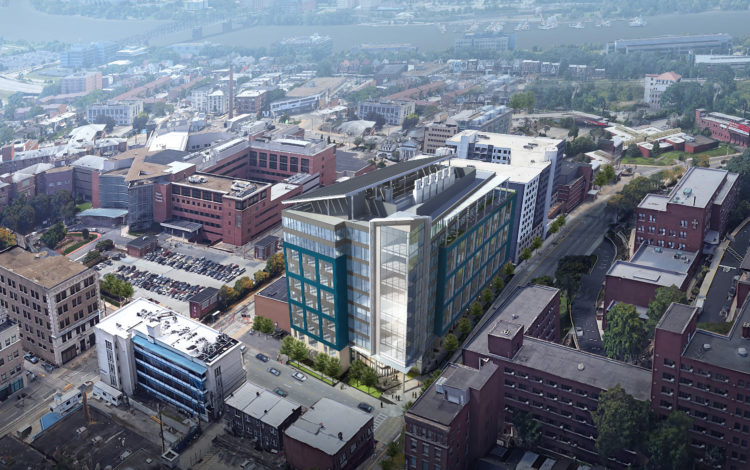With two full months of pandemic mitigation under our belts, we are finally beginning to understand the secondary effects of the health crisis. Here are a couple of derivative financial impacts to consider. Unlike previous recessions, the peculiarities and uncertainty of the COVID-19 pandemic are creating unusual stresses on primary care medicine and bankruptcy. As the divergence grows between the health of the stock market and the health of the underlying economy, the shutdown is impacting each of these in an exceptional way.
The fact that there are likely to be a dramatic increase in bankruptcy filings is not unusual for the coronavirus-induced recession. Recessions create different winners and losers. Sometimes it’s just bad luck or timing for a firm that was doing well prior to a downturn. Regardless of the reasons, the steep reduction in business and disruption of credit that accompany recessions results in businesses having to declare bankruptcy. For many of those firms, the bankruptcy allows for reorganization and forbearance that leads to recovery, and ultimately to creditors being repaid. In many cases, the act of filing bankruptcy motivates creditors to reassess their positions and the bankruptcy is avoided altogether. Of course, a significant share of the bankruptcies filed during a recession is Chapter 7 filings, which result in liquidation.
This recession is causing a shakeup in the bankruptcy landscape and the pattern of financial distress is different from any post-World War II recession. One factor that leads to bankruptcy is corporate debt that can’t be paid. Coming into 2020, the levels of corporate debt held in speculative BBB or junk bonds were high, and the stress since then has elevated worries of default. As defaults increase, bonds will be further downgraded, meaning it will be harder for U.S. corporations to raise debt and more costly when they do.
One measure of this problem is the rise in distressed credits, or junk bonds with spreads that are ten points higher than the corresponding U.S. Treasury bonds. In other words, a distressed two-year corporate bond would yield 10.13% on May 20. Standard & Poors estimates that distressed credits as a share of junk bonds rose from 25% to 30% from March 16 to April 10. During that same period the default rate for junk bonds rose in the U.S. from 3.5% to 3.9%. Two-thirds of global defaults in April were by U.S. corporations. This is strong indicator of coming bankruptcies. Moody’s predicts that the global default rate for junk bonds will be twice the 10% rate that marked the financial crisis.
Should this trend play out to bring a steep rise in bankruptcy filings, another issue looms: inadequate bankruptcy court capacity. Courts are already stretched thin and the looming wave of bankruptcies threatens to overwhelm them. That would leave corporations and creditors floundering without resolution while the courts try to catch up.
These dynamics suggest that there will be an increase in pre-packaged bankruptcy agreements and other alternatives to dissolution. Unlike in 2009, liquidity is not a problem in capital markets. There has been dramatic growth in private equity rescue funds. Viable companies should be able to access credit to survive the business disruption or to negotiate satisfactory payments and refinance debt with creditors. But the peculiar nature of this recession makes it almost impossible to determine corporate value. That makes it tough to assign share prices for investors in exchange for equity, or to determine credit worthiness when there are limited revenues, cash flow and view to the future of the market.
Solutions to these challenges for bankruptcy and debt refinancing could keep businesses from closing their doors in the coming months.
The plight of hospitals during the pandemic has been well-documented. What has received less attention is the financial stress of the healthcare system’s foundational element, the personal care physician (PCP).
Mitigation measures in all states included avoidance of doctors’ offices for anything other than emergency or necessary visits. That has resulted in a massive loss in revenues for PCP practices across the U.S. Physicians switched gears fairly adroitly as the virus spread, moving quickly to telemedicine as a way to treat many patients; however, fees for telemedicine appointments are lower, as are reimbursements. Compounding the revenue problem are the delays in getting reimbursements from insurers during the shutdown and the delays in billing from the more limited staffing in PCP offices.
Losing PCP practices, either to closing doors or mergers with large practices, will be bad for healthcare consumers. If there are fewer PCPs competition is reduced, raising prices. In areas that are already underserved by PCPs, consolidation will just broaden these healthcare deserts. Losing more density of healthcare providers will reduce the number of referrals to specialists. More people will put off treating nagging ailments and chronic conditions if the PCP office is inconvenient. That will result in higher hospital admissions and escalating costs of treatment for serious conditions that could have been treated cheaper at an earlier stage.
The problems facing primary care and bankruptcy are downstream from the obvious healthcare and economic crisis. But they represent systemic weaknesses that will present challenges that are mostly unforeseen now.

Some construction news: PBX is reporting that the $55 million Evans City Elementary School is out to bid due June 19. Continental Building Co. is taking bids for the $12 million North Shore Lot 10 445-car parking garage on May 27. Rycon Construction was selected as CM for the $25 million redevelopment of the former Sears Outlet on 51st Street. Construction will resume on the $80 million, 280,000 square foot Innovation Research Center in Oakland being developed by Walnut Capital and built by PJ Dick Inc.
